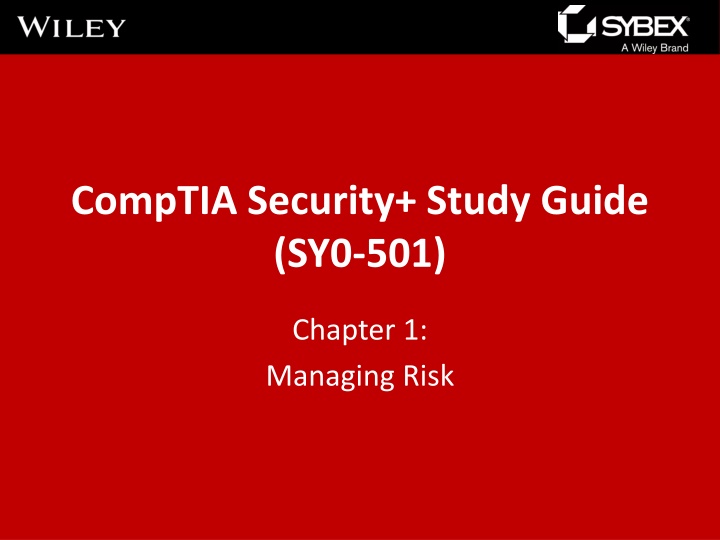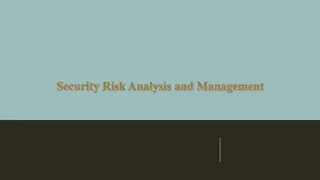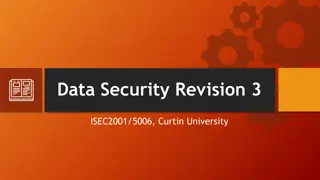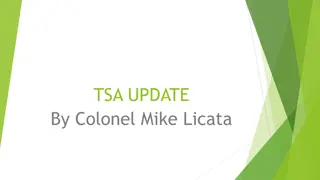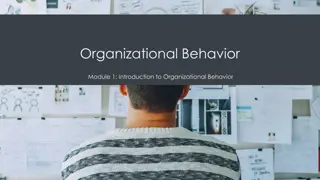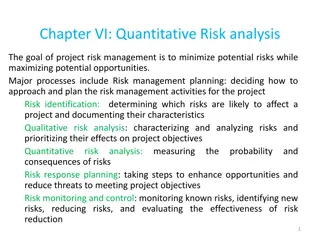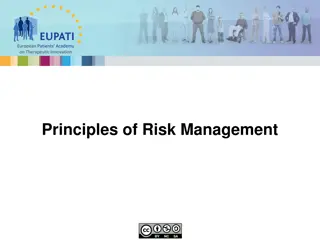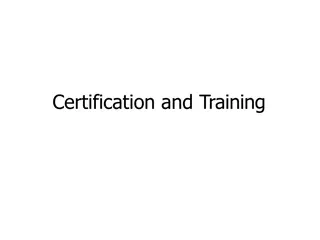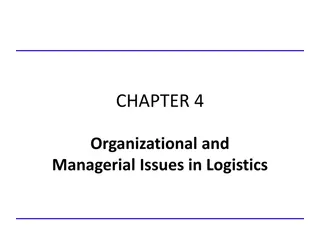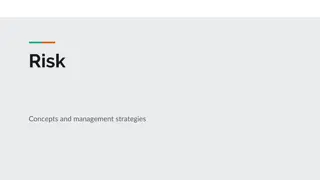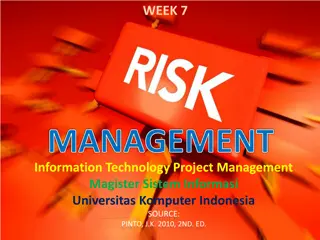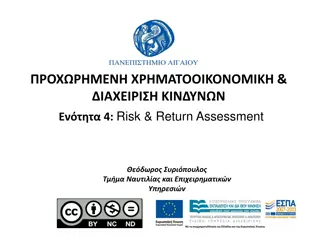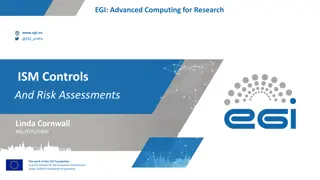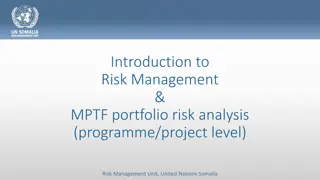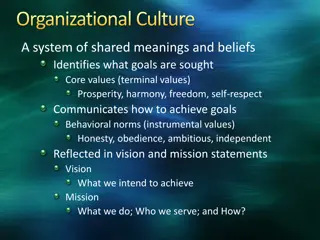Risk Management Strategies in Organizational Security
Exploring risk management in organizational security, this study guide delves into resiliency, automation strategies, policies, and procedures to reduce risk. It covers threat assessments, computing risk assessments, qualitative vs. quantitative risk measurements, and actions based on risk assessments like avoidance, transference, mitigation, and acceptance.
Download Presentation

Please find below an Image/Link to download the presentation.
The content on the website is provided AS IS for your information and personal use only. It may not be sold, licensed, or shared on other websites without obtaining consent from the author.If you encounter any issues during the download, it is possible that the publisher has removed the file from their server.
You are allowed to download the files provided on this website for personal or commercial use, subject to the condition that they are used lawfully. All files are the property of their respective owners.
The content on the website is provided AS IS for your information and personal use only. It may not be sold, licensed, or shared on other websites without obtaining consent from the author.
E N D
Presentation Transcript
CompTIA Security+ Study Guide (SY0-501) Chapter 1: Managing Risk
Chapter 1: Managing Risk Explain how resiliency and automation strategies reduce risk Explain the importance of policies, plans, and procedures related to organizational security
Threat Assessment Threats can be categorized as environmental, manmade, and internal vs. external Risk assessment (risk analysis) Risk assessment Deals with the threats, vulnerabilities, and impacts of a loss of information-processing capabilities or information itself Key components of risk assessment Risks to which the organization is exposed Risks that need addressing Coordination with BIA
Computing Risk Assessment Methods of measurement Annualized rate of occurrence (ARO) Likelihood, often from historical data, of an event occurring within a year ARO can be used in conjunction with: Single loss expectancy (SLE) Annual loss expectancy (ALE) Formula: SLE x ARO = ALE
Computing Risk Assessment Continued Risk assessment can be qualitative or quantitative Qualitative Opinion-based and subjective Quantitative Cost-based and objective
Risk Measurements MTBF: Mean Time Between Failures MTTF: Mean Time To Failure MTTR: Mean Time To Restore RTO: Recovery Time Objective RPO: Recovery Point Objective
Acting on Your Risk Assessment Risk avoidance Involves identifying a risk and making the decision to no longer engage in actions associated with that risk Risk transference Sharing some of the burden of the risk with someone else Risk mitigation Accomplished anytime steps are taken to reduce risk
Acting on Your Risk Assessment Risk acceptance Often the choice you must make when the cost of implementing any of the other choices exceeds the value of the harm that would occur if the risk came to fruition
Risks and Cloud Computing Cloud computing Using the Internet to host services and data instead of hosting it locally Three ways to implement cloud computing 1. Platform as a Service 2. Software as a Service 3. Infrastructure as a Service
Risks and Cloud Computing Risk-related issues associated with cloud computing Regulatory compliance User privileges Data integration/segregation
Risks Associated with Virtualization Breaking out of the virtual machine Network and security controls can intermingle Hypervisor: the virtual machine monitoring the software that allows the virtual machines to exist
Developing Policies, Standards, and Guidelines Implementing policies Policies provide people in an organization with guidance about their expected behavior Well-written policies are clear and concise and outline the consequences when they are not followed
Key Areas of a Good Policy Scope statement Outlines what the policy intends to accomplish and which documents, laws, and practices the policy addresses Policy overview statement Provides goal of the policy, why it s important, and how to comply with it Policy statement Should be as clear and unambiguous as possible Accountability statement Provides additional information to readers about who to contact if a problem is discovered Exception statement Provides specific guidance about the procedure or process that must be followed in order to deviate from the policy
Chapter 1: Measuring and Weighing Risk Incorporating standards: five points 1. Scope and purpose 2. Roles and responsibilities 3. Reference documents 4. Performance criteria 5. Maintenance and administrative requirements
Following Guidelines Guidelines Help an organization implement or maintain standards by providing information on how to accomplish policies and maintain standards Four Minimum Contents of Good Guidelines 1. Scope and purpose 2. Roles and responsibilities 3. Guideline statements 4. Operational considerations
Business Policies Primary Areas of Concern Mandatory vacations Job rotation Separation of duties Clean desk Background checks Nondisclosure Onboarding Continuing education Exit interviews Role-based awareness
Business Policies Primary Areas of Concern Continued Acceptable use policies (AUP) Adverse actions General security policies Network/application policies
Chapter 1: Measuring and Weighing Risk False positives Events that aren t really incidents Risk management best practices Business impact analysis (BIA)
Redundant Array of Independent Disks Redundant array of independent disks (RAID) A technology that uses multiple disks to provide fault tolerance Several designations for RAID levels RAID Level 0 RAID 0 is disk striping. RAID Level 1 RAID 1 is disk mirroring. RAID Level 3 RAID 3 is disk striping with a parity disk. RAID Level 5 RAID 5 is disk striping with parity
